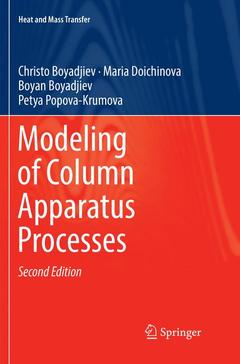Description
Modeling of Column Apparatus Processes (2nd Ed., 2nd ed. 2018)
Heat and Mass Transfer Series
Authors: Boyadjiev Christo, Doichinova Maria, Boyadjiev Boyan, Popova-Krumova Petya
Language: English
Subjects for Modeling of Column Apparatus Processes:
Approximative price 105.49 €
In Print (Delivery period: 15 days).
Add to cartPublication date: 02-2019
Support: Print on demand
105.49 €
In Print (Delivery period: 15 days).
Add to cartPublication date: 05-2018
Support: Print on demand
Description
/li>Contents
/li>Comment
/li>
This new edition includes brand-new developments in the modeling of processes in the column apparatuses. It analyzes the radial velocity component and axial variation in the axial velocity in the column. These models are described in five new chapters.
The book presents models of chemical and interphase mass transfer processes in industrial column apparatuses, using convection-diffusion and average-concentration models. It also introduces average concentration models for quantitative analysis, which use the average values of the velocity and concentration over the cross-sectional area of the column. The new models are used to analyze a broad range of processes (simple and complex chemical reactions, physical and chemical absorption, physical and chemical adsorption, catalytic reactions in the cases of physical and chemical adsorption mechanism), and make it possible to model sulfur dioxide gas purification processes.
These books may interest you

Micellar Catalysis 56.31 €



